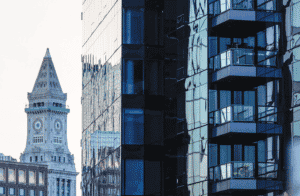The combination of historically low interest rates, the Federal Reserve injecting trillions of dollars into the financial system and the wealth effect in full swing triggered a mad rush to own the perfect property last year. As in many urban areas, the market enthusiasm in the downtown Boston market was more tempered when compared to suburban activity.
Things did get a little frothy at the very high-end of the market with records being smashed left and right. According to MLS data, the new record price for a single-family Boston home now stands at $15.15 million. That honor belongs to 7 Mount Vernon Place on Beacon Hill.
The ultra-high-end condominium market also got in on the action. A penthouse unit at the Mandarin Oriental fetched a staggering $27.5 million ($4,081 per square foot). We also got a new record high per-square-foot price for a condominium: $4,172 for a two-bedroom penthouse at 2 Commonwealth Ave., which sold for $15 million.
Excess Inventory Eaten Up
Don’t let the big-ticket headlines fool you. While the top tier of the 1 percent were throwing all caution to the wind, the broader market was far more orderly. Year over year, our Batterymarch Back Bay Index (BBBI), which tracks Back Bay two-bedroom condominium resales, registered a modest price gain of 2.6 percent on 24 percent higher transaction volume.
The South End, Back Bay and Beacon Hill single family home activity confirmed what we saw in the BBBI. A total of 81 single family homes changed hands last year, up 51 percent from the trailing five-year average. The price per square foot slipped marginally from $1,206 per square foot in 2020 to $1,187 per square foot last year.
The higher 2021 transaction volume can be chalked up to the pandemic-related 2020 slowdown. We are encouraged that the pent-up supply has been met with solid demand and it looks like the market has cleared out most of the pandemic-related inventory backlog, with prices remaining stable.
From our vantage point, the most important thing in any market is liquidity. It doesn’t matter how much you – or your listing agent – think your property is worth. If there’s no bid, you’re out of luck. With all the fear mongering about people fleeing the city, the downtown market remained stable and liquid.
A Glut of New Development?
We hear a lot about the greater Boston housing shortage, but the downtown market is grappling with what we see as a glut of new construction. In our October 2020 report, “The Great Boston Building Boom,” we highlighted the 7,600 new units in the pipeline, many of which are just now hitting the market.
The bulk of these new developments are in nontraditional areas: the Seaport, Government Center, Ink Block and others. Clearly the muted price performance in traditional downtown residential neighborhoods relates to buyers being pulled into these new areas, many of which were formerly industrial or commercial.
To entice buyers into what we refer to as “no man’s land,” developers load these properties with amenities like squash courts, rooftop swimming pools, doggie daycares – the list goes on and on. The marketing pitch is all about lifestyle over location.
In our view, these amenities are sales gimmicks and over time will drive up condominium fees. Some may disappear altogether. The Wall Street Journal recently ran a story about angry residents at the Millennium Tower: They’re up in arms over the closing of their residents-only restaurant.
Location, Location, Location
On a macro level, we see the combination of higher interest rates and quantitative tightening weighing on real estate values and liquidity. It should be noted that the Federal Reserve currently owns about $2.6 trillion, or roughly 30 percent of all outstanding residential mortgages. Prior to the 2008 financial crisis, the Fed owned zero mortgages. The recent housing mania goes well beyond ultra-low interest rates. The market has been subsidized by the federal government and unwinding these subsidies could spell trouble for the housing market.

Andrew Haigney
We remain skeptical of new developments. It’s not clear how these properties will hold their value over the longer term. Consider the 20-year-old Ritz towers on Avery Street. Sellers there are struggling to get $1,100 per square foot, while low/mid $2,000s per square foot are commonplace in new developments in far less desirable locations.
We continue to see good relative value opportunities downtown. We’re advising our clients to stick with traditional locations and well-maintained buildings. If you’re not afraid to take on a renovation project, the value proposition gets even better. We are keeping a close eye on supply-demand dynamics. Aging baby boomers are starting to sell off their assets and this demographic trend could create an inventory overhang, which could spell opportunity for buyers.
Andrew Haigney is principal of The Batterymarch Group.




 |
| 

